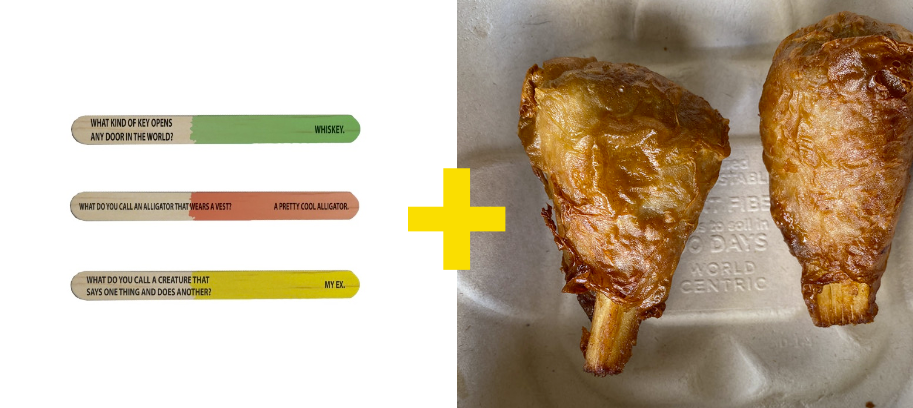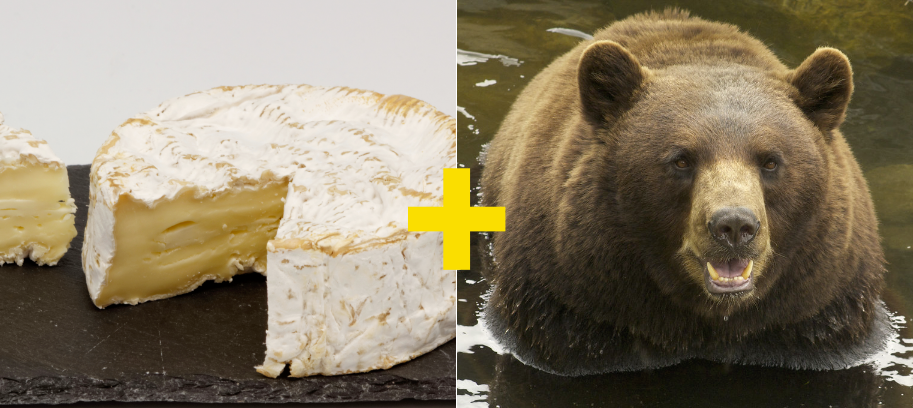The most urgent white spaces in alternative protein product development
We’ve all heard about areas of alternative protein where further innovation is needed, such as whole-cut alternative meat products. Yet some of the most crucial white spaces are hardly ever talked about. If you’re wondering which products will be key to the success of the alternative protein industry, read on!
The four most urgent alternative protein products
1. One of the most incredible food innovations of the last century was the printing of hilarious jokes on popsicle sticks. This game-changing move inspired our first product white space: chicken wings with jokes printed on the bones! Surely anyone who has ever walked down a grocery store freezer aisle has wondered why this genius idea hasn’t come to fruition yet. Today, there is hope. Along with its environmental, social, and ethical benefits, cultivated and plant-based meat technology opens the door to finally filling this gap in humerus chicken wing product offerings.

2. While reinventing meat is crucial, we also need to talk about the most significant and obvious gap in today’s dairy offerings. Despite its name being ripe for bear puns, camembert cheese is inexplicably made with cow’s milk. One can only assume that camembear made from precision fermentation-derived bear milk would be a vastly superior product.

3. Sometime last year, there was a photo going around social media of a hat with a small wrinkle in it. Like everyone else, my first thought was, Ha, that’s cute! It looks like it says, “You had meat coffee,” instead of, “You had me at coffee!” But then I thought about it some more, and I realized that I hadn’t had meat coffee, and that I was kind of mad about it. What is meat coffee? I have no idea! Maybe it’s broth made by using coffee plants to express the enzymes that create key chicken flavor compounds. Maybe it’s a steak grown from Wagyu beef cells engineered to produce caffeine. Either way, the real question is: What would Joey Tribbiani say about this? I think he would say, Meat? Good. Coffee? Good.

4. Finally, let’s talk about fish. While an excellent source of protein, omega-3 fatty acids, and other nutrients, conventional fish has one flaw that’s pretty hard to overlook: For whatever reason, it’s not shaped like Laurence Fishburne’s face. With cultivated fish, we can finally correct this error. To achieve the desired geometry in the final product, it will be crucial to develop scaffolds that sufficiently replicate the properties of the extracellular matrix.

APRIL FOOLS!
By now, you’ve probably gathered that these aren’t really the most urgent product white spaces and that this is an April Fool’s Day post. But it does bring up a more serious point. If our goal is to build a better food system, we shouldn’t constrain ourselves to what meat (or food in general, for that matter) has always looked like.
While it’s generally true that we need to learn to follow the rules of meat—for example, that we need to develop sophisticated methods for making plant-based meat with the texture of conventional meat, understand how the post-harvest processes in cultivated meat will differ from the equivalent processes in conventional meat, and put in place the supply chains that will be needed to produce nutritionally-equivalent alternative seafood at scale—before we can break those rules, this shouldn’t stop us from thinking outside the box.
Published in 2014, the In Vitro Meat Cookbook described a fantastic variety of imagined meat dishes, from meat cocktails to knitted steak. Isha Datar’s 2021 TED talk similarly encouraged us to consider how cellular agriculture could be a tool for culinary creativity.
If you’re an aspiring entrepreneur and this blog post has convinced you that making chicken wings with jokes is your new calling, please check out our entrepreneurship resources!
If you’re an academic researcher interested in plant molecular farming and you’re trying to figure out how to apply your skills and expertise to make meat coffee happen, we have a variety of resources geared toward your needs as well.
And if you’re a student trying to figure out what major will give you the best chance of becoming the world’s first camembear producer, you may find our student resource hub helpful.

